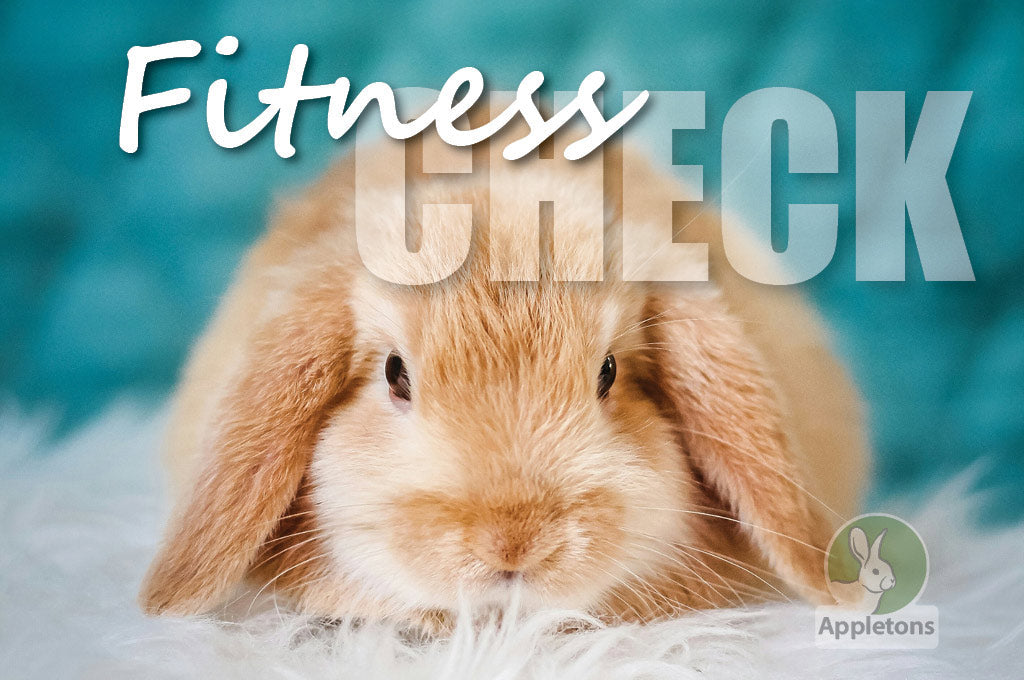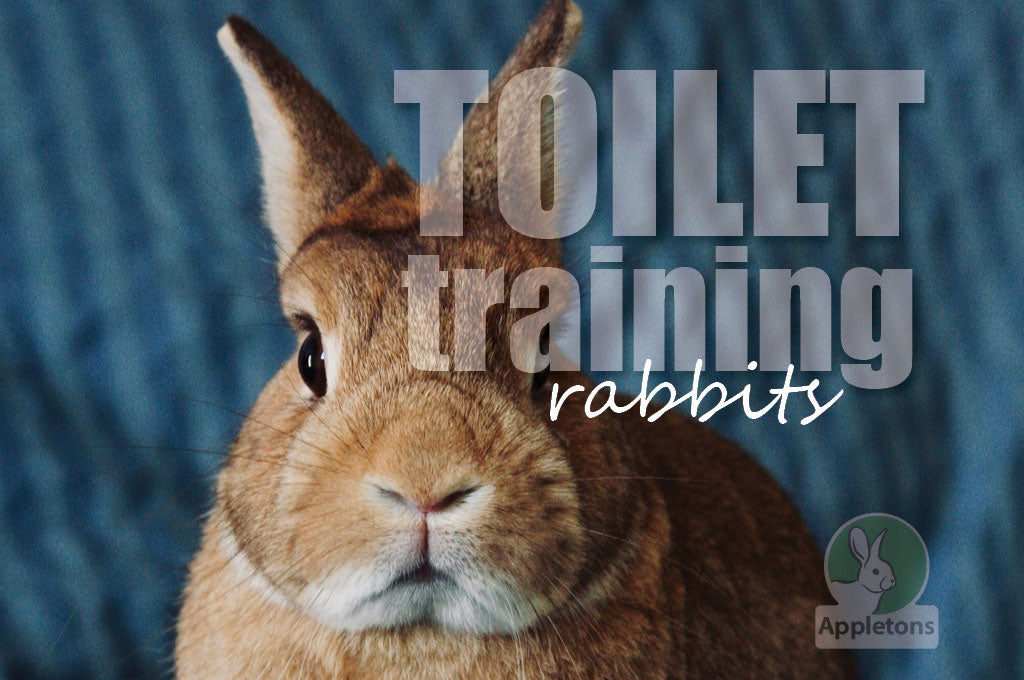Rabbit Hygiene | Healthcare
Rabbits are typically tidy animals, frequently engaging in self-grooming and occasional mutual grooming with their companions. Nonetheless, there are instances when they might require some assistance such as a thorough brushing during their molting periods. It's important to highlight that certain breeds with longer hair, like Angora rabbits, may require regular grooming attention.
Here are some useful tips and general guides on how to maintain your rabbits hygiene, covering tasks from cleaning your pets' feet, to emergency bathing. It is crucial to monitor your pet's overall condition and coat health. If you observe any difficulties in your rabbit's self-grooming, or notice signs like excessive dung caught in their rear fur, or premature bald patches, it could indicate an underlying health problem that if untreated, may require a visit to the vet.


How Often Do you Clean a Rabbit?
For most breeds, healthy individuals very seldom need to be cleaned. Rabbits are very tidy creatures, and will do the vast majority of their own grooming themselves. They will lick their fur, and use their paws to get at those areas that are a little tricky to reach. It’s likely that their friend (or friends) will give them a hand too - you will often see your rabbits grooming each other. Not only does this help them bond, but it also makes it easier to keep everyone nice, clean and parasite-free.
If your rabbits are outside often, or have very long hair, then you may need to groom and clean (but not bath - baths are quite dangerous for rabbits) them once in a while, however, this will depend strongly on which breed you have, and how dirty they will get where you are keeping them. For example, rabbits of the Angora breed need grooming every day!
One of the few things that you need to do is regularly check your rabbit’s behind for faecal buildup. If this does occur it makes your pet really susceptible to a horrible condition caused by flies - flystrike. It’s often fatal, so every precaution should be taken against it. Keep your rabbits, and their hutch, clean and as free of faeces as you can manage. Spot-cleaning once or twice a day when you feed your rabbits is a good way of reducing the risks.
How to Give Your Rabbit a Bath
Rabbits, similar to many small mammals, do not require regular bathing as humans do. They strongly dislike being even partially immersed in water, and their body temperatures can decrease rapidly between the end of the bath and becoming completely dry. While rabbits generally lead content lives without needing baths, some pet rabbits, especially as they age, may require occasional assistance with hygiene. There are two primary situations where intervention becomes necessary: when they encounter substances that they shouldn't attempt to clean off themselves, or when there's a buildup of excrement on their rear.
In both scenarios, giving your rabbit an actual bath should be the absolute last resort. Opting for spot cleaning is a more preferable approach. Spot cleaning involves using a damp cloth or a piece of kitchen towel to gently clean the affected area. Dabbing at the spot with the cloth and thoroughly drying it with the paper towel is often effective, as long as the substance can be removed this way. If dealing with a more stubborn issue, such as an oil-based substance, a specialized water-free shampoo for rabbits (available in pet shops) may be necessary. If your rabbit is exceptionally dirty and there are no other alternatives, you may have to resort to giving them a bath. Strive to only wet the specific area that needs cleaning. For example, if it's just their leg, dip it into a bucket of lukewarm water and quickly remove it. Place your pet on your lap, then gently work a rabbit-friendly shampoo into the leg. Thoroughly rinse to ensure no soap residue remains (to prevent skin irritation).
Once you're certain that all the shampoo has been rinsed out, delicately dry your rabbit with a clean towel. If your hair dryer has a cool (not cold) setting, you can gently use it to dry your rabbit, ensuring constant movement to prevent overheating or chilling the skin. It's advisable to keep a bathed rabbit indoors overnight to avoid exposure to chilly outdoor temperatures that could pose a risk of hypothermia.

How to Clean Your Rabbit's Feet
If your rabbits’ feet are very dirty or muddy, you can use a damp cloth and a bit of kitchen towel to clean them.
TIP: Get a few cloths that have been wetted in warm water, and then hold the rabbit still on your lap. Consider having a towel on your lap for the rabbit to sit on, so that your clothes don’t get soaked! Gently wipe off any dirt, and then with the kitchen towel, pat your rabbit’s feet dry.
How to Clean Your Rabbit's Eyes
There are lots of potential causes of rabbits not being able to open their eyes, but discharge and injury are often the culpritspat your rabbit’s feet dry. If you are sure that it’s just a one - off thing caused by a particularly dusty day, then you can use a moist cloth to remove the gunk from your rabbit’s eye. It may be that your rabbit is simply unable to open its eye due to a buildup of substances secreted by the eye itself. If this is the case, you will need to get a moist, clean cloth (one that has been soaked in warm water) and sit your rabbit on your lap. Gently place the moist cloth over your pet’s eye. Don’t apply any pressure, just allow the cloth contact so that the water can soak into the substance and weaken it a little. After a few seconds, very gently wipe the closed eye once or twice, taking care not to be too hard. If the eye still does not open, then repeat the soak and wipe process again. If, after four or five repeats of this process, you’re still not having any luck, then we recommend taking your pet to the vet.
How to Clean Your Rabbit's Ears
Although your rabbits will clean their own ears most of the time, you should check them regularly to make sure that there are no medical problems or material build-ups occurring there. Examining your rabbits’ ears regularly will help you spot a number of problems early, such as ear mites. There shouldn’t be any discharge from the ears, excessive wax or brown material in there, as these symptoms indicate health problems
If you are sure that your rabbits are just a bit grubby rather than having an underlying health problem, then you can clean the outside of your pets’ ears with a damp rag (one that you’re happy to throw away afterwards so you don’t spread any potential germs). Moisten the rag with lukewarm water, and make sure that it’s not actually sopping wet. When it makes contact with your rabbit’s ear, you don’t want water to stream off of it as this could make its way into an ear canal.
Once the rag is moist, gently wipe off the dirt from the ear, and lightly pat dry with a new rag. Use a separate rag to do the other ear in case you transmit any infection.


Mites | How Do Rabbits Get Them?
Mites affect a lot of pets. Not only are they extraordinarily uncomfortable, but they are a danger to your pets’ health and should be dealt with as soon as possible. There are a number of different mites that can live on your rabbits, ranging from ear mites to fur mites. Owners should be on the look-out for scratching, as well as for sores and brown material in the ears and white dandruff-like material in the coat. A vet will be able to deal with any of these problems, so don’t delay in seeking their advice - some of these parasites burrow into your pets' skin and really hurt them.
There are two main ways that your rabbit can contract mites: through hay, and from an infected animal.
TIP: Many owners recommend freezing the hay that you buy for a good 72 hours, then leaving it to defrost for a few days before using it. This period of freezing has been known to kill both mites and their eggs - just be sure to defrost the hay properly, and to never give your pets cold, frozen, damp or mouldy bedding.
As well as bedding, and from other pets in the household, your rabbits can also get mites from their rabbit friends. If your rabbit has been in contact with another person's rabbit recently, it’s possible that they could have contracted it from them. Since mites are hardy little creatures, they can also survive on things that other rabbits have touched, such as toys and bedding. Washing things above sixty degrees, or freezing for 72 hours, should kill the mites and their eggs.
Other Common Parasites
Fleas
Fleas are small insects that can live off of humans and rabbits alike. These little parasites suck your blood for their meals, and leave itchy and painful bite marks in return! They also carry a number of nasty diseases, such as myxomatosis, so it’s wise to take action if you suspect a flea infestation. If you notice that your rabbit is scratching a lot, and has lots of dark brown material in their fur (material that turns red on contact with water), then it could be that your rabbit has fleas. Use a flea comb to check their hair for confirmation, then use a rabbit-friendly flea treatment, following the instructions carefully.
Ticks
Ticks, like fleas, are also bloodsucking parasites and will embed their mouths in the rabbit’s body and suck their blood until they are full. At this stage they’ll be really visible - as big grey blobs stuck to your poor pet. Like fleas, ticks can transfer a lot of nasty diseases to your pets, so it’s best to try to prevent them, and to keep an eye out for them when you’re checking your rabbit’s health, each week. Any grass you offer to your pets should also be checked for these parasites, and you can get rabbit-friendly tick prevention methods from your local veterinarian.

Explore our rabbit blogs and discover more info on how to care for your pet rabbits.




Swipe for more
